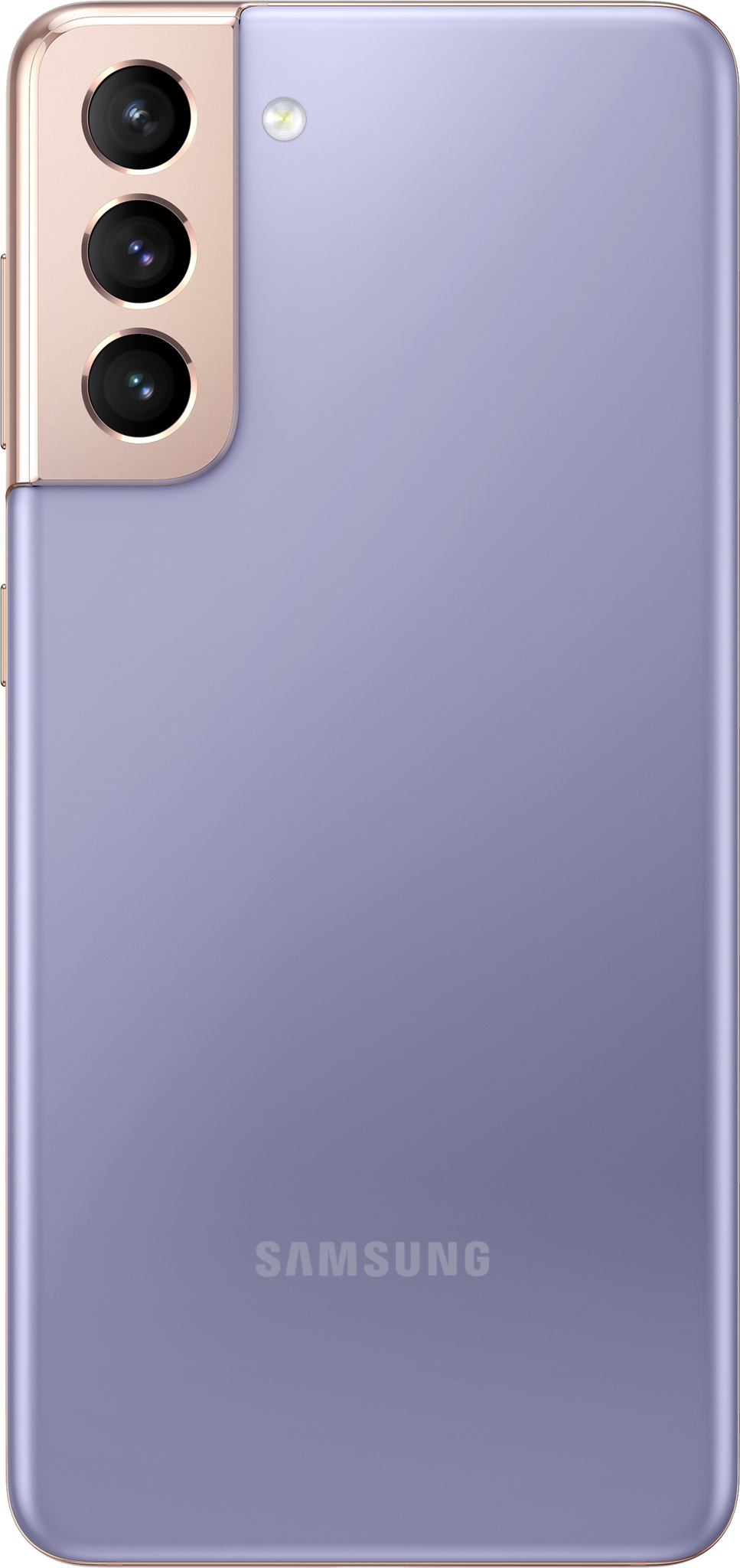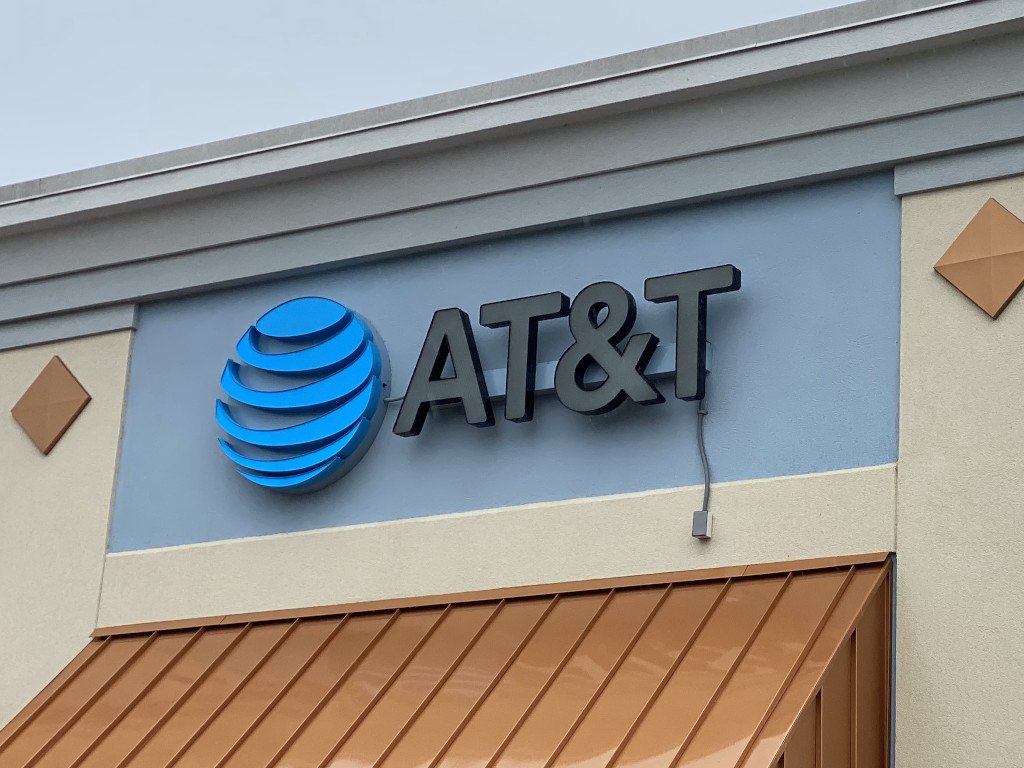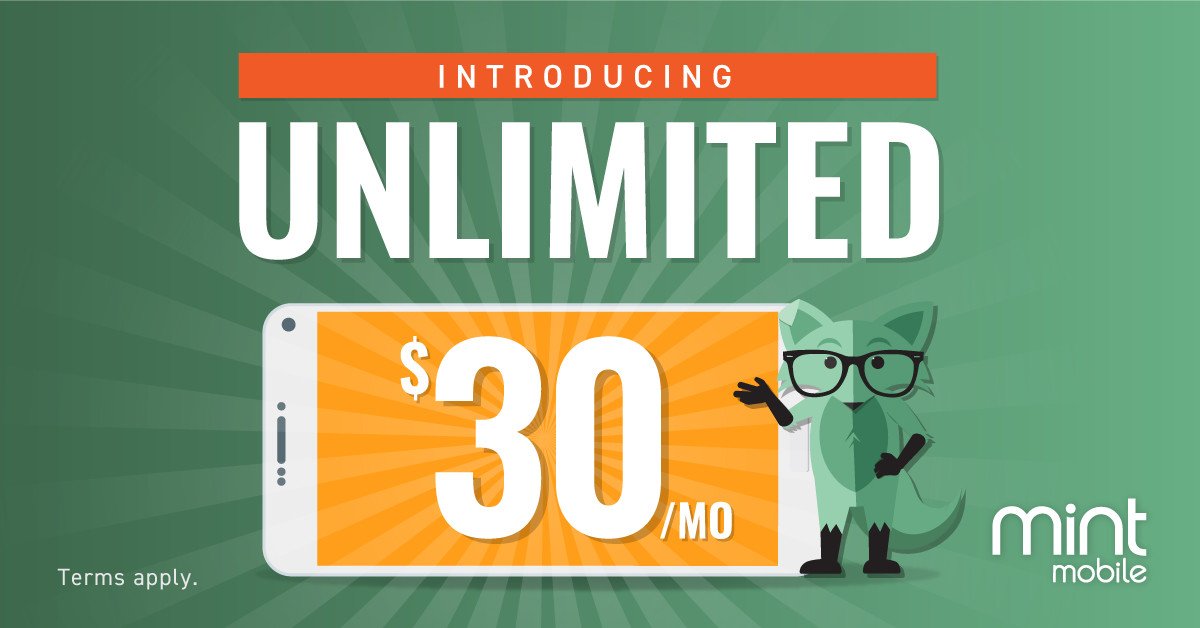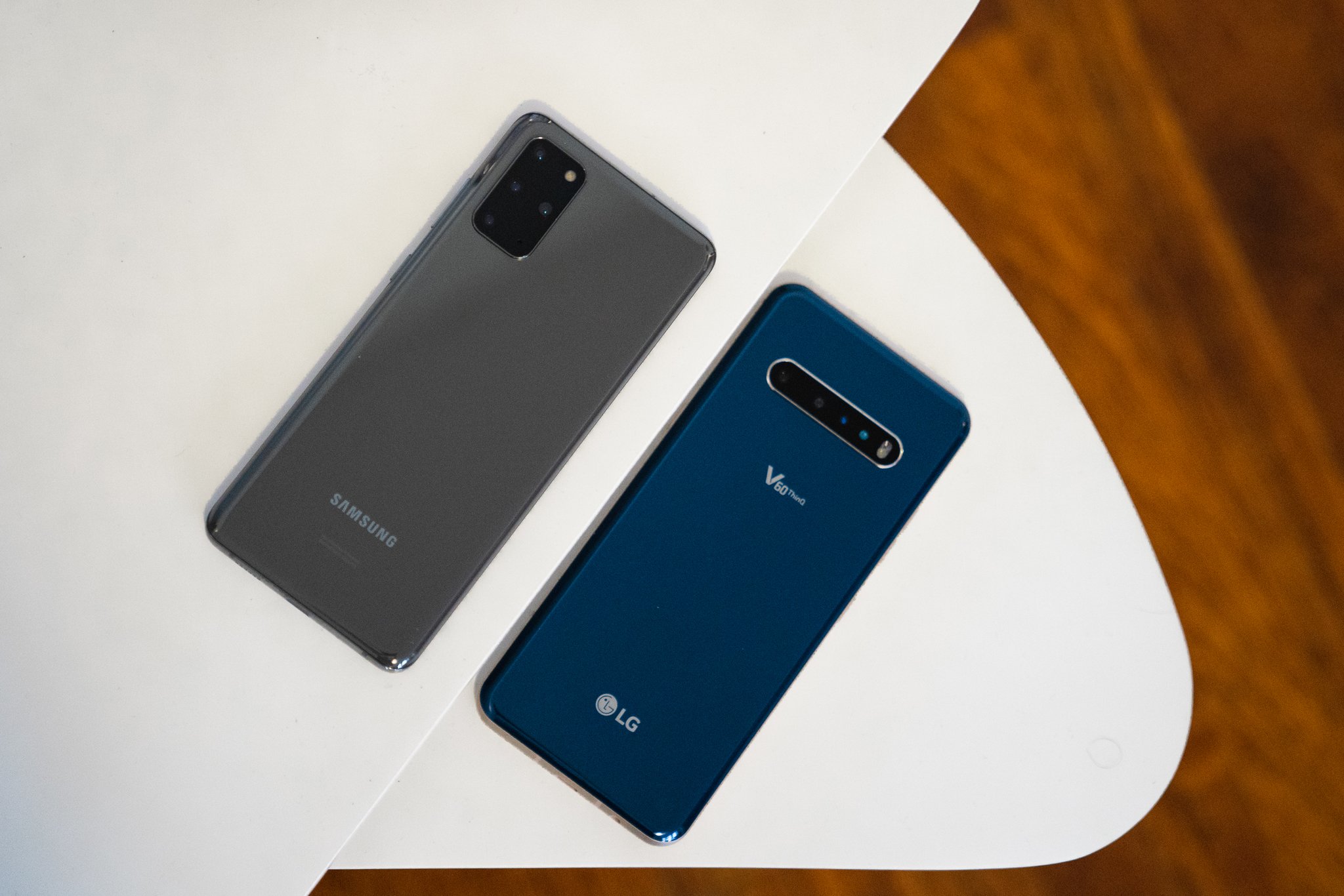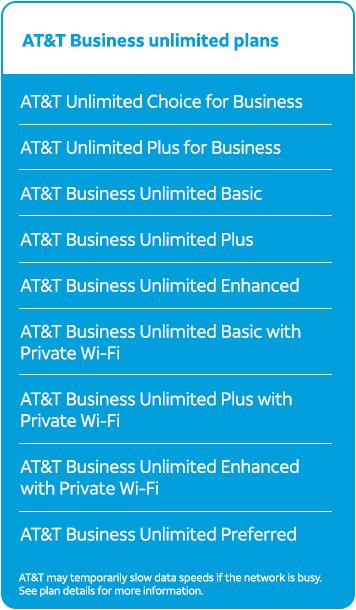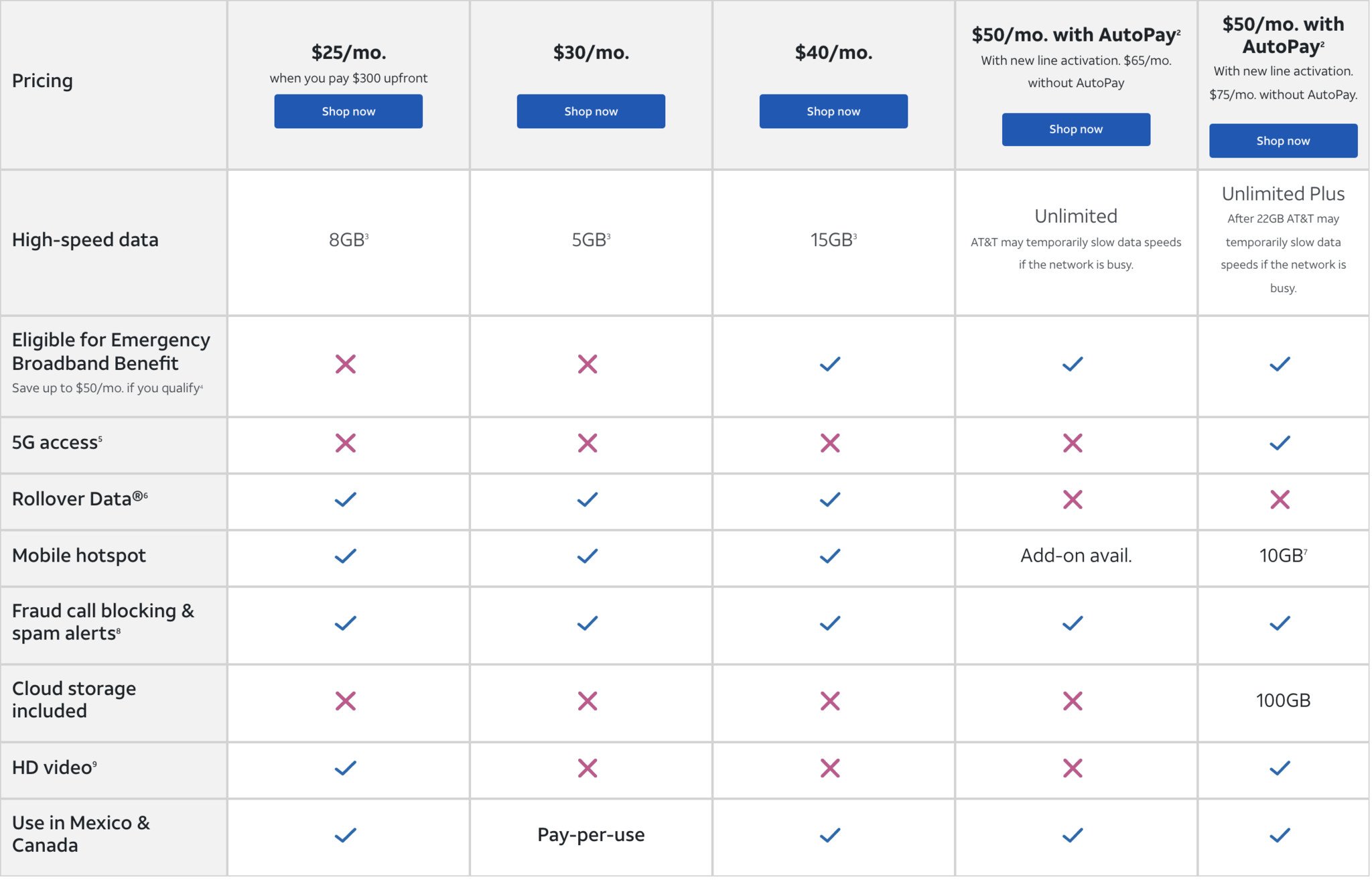What you need to know about AT&T 5G
5G, AT&T, and what it means for you.
AT&T has one of the most developed 5G networks out right now, with millimeter-wave coverage alongside low-band coverage. Both networks are available to customers with phones capable of connecting to both networks. AT&T has been aggressively expanding its 5G network and now approximates coverage for 250 million people, with mmWave expansion continuing to add capacity in high-traffic areas.
Jump to:- When will my area get 5G?
- Cities covered
- Which phones work with 5G?
- Which plan do I need?
- What tech is AT&T using?
- What is 5Ge?
- Is 5G worth it for most people?
5G access with 50GB of premium data
AT&T's Unlimited Extra plan is one of the best ways to use AT&T's network thanks to 50GB of premium data, 15GB of mobile hotspot data, and 5G access
When will my area get 5G?As far as 5G goes, AT&T is building two networks with C-band coming in 2022. One network is a low-band sub-6 5G deployment at 850MHz. The majority of customers will see 5G on this network. The other network is called 5G+ and is a high-band mmWave network capable of very fast speeds but has a much more limited range. All current AT&T 5G phones support low-band 5G, with only a handful of high-end phones supporting the faster mmWave network.
Dynamic Spectrum Sharing, or DSS, is a technique that reuses spectrum currently used for 4G with both 4G and 5G as the need grows. Unlike the refarming spectrum from LTE and simply moving capacity from one network to the other, DSS can keep both networks active and allocate portions of that spectrum as needed to either 4G or 5G. On June 5, 2020, AT&T began deploying DSS to improve connectivity for 5G customers without reducing capacity on the older 4G network. Performance on this technology will depend on the spectrum and load in the area but likely won't be significantly faster than LTE most of the time.
AT&T plans to add more capacity to its 5G network using the mid-band spectrum won from FCC auctions. On February 24, AT&T spent $23.4 billion on a 3.7GHz spectrum, which will add a lot of capacity to the network, similar to how T-Mobile has been able to integrate Sprint's 2.5GHz spectrum into its network. C-band coverage will start to come online in 2022 and will continue to expand for a few years as needed. Still, C-band gives AT&T room to grow in a very crowded and competitive market.
AT&T began preparing its towers for a 5G network with LTE upgrades it calls 5GE. This essentially added the network capacity on the backend for 5G, including upgraded fiber network connections. If you see 5GE on your older AT&T phone, this is not actually 5G and is actually 4G LTE with tower upgrades that make the most of LTE technology.
True 5G is now shown on AT&T's standard coverage maps which makes it easier than ever to see how far this coverage has made it. These maps take a while to get updated, so check out the entire list for the most up-to-date locations.
Which cities are covered by AT&T's 5G network?AT&T's low-band nationwide 5G network is now worthy of appearing on its full coverage map. If you're looking for coverage, that's the best place to start. You can also keep updated on 5G coverage on all carriers to know which network is best for 5G in your area.
For the most part, you'll be using the larger low-band 5G coverage for at least the next few years. However, if you have one of the phones that supports AT&T's mmWave 5G+ network, you can still get some incredible speeds in several U.S. cities.
These markets now have AT&T 5G+ coverage.
Cities
- Arizona
- Phoenix
- California
- Los Angeles
- Menlo Park
- Oakland
- Redwood City
- San Bruno
- San Diego
- San Francisco
- San Jose
- West Hollywood
- Florida
- Jacksonville
- Miami
- Miami Gardens
- Orlando
- Tallahassee
- Tampa
- Georgia
- Atlanta
- Indiana
- Indianapolis
- Illinois
- Chicago
- Kentucky
- Louisville
- Louisiana
- New Orleans
- Maryland
- Baltimore
- Ocean City
- Michigan
- Detroit
- North Carolina
- Charlotte
- Raleigh
- Nevada
- Las Vegas
- New York
- New York City
- Ohio
- Cleveland
- Oklahoma
- Oklahoma City
- Pennsylvania
- King of Prussia
- Philadelphia
- Tennessee
- Nashville
- Texas
- Austin
- Corpus Christi
- Dallas
- Fredericksburg
- Houston
- San Antonio
- Waco
- Wisconsin
- Milwaukee
Airports
- Florida
- Tampa International Airport
Arenas and Venues
- California
- Dodger Stadium - Los Angeles
- Oracle Park - San Francisco
- Colorado
- Ball Arena - Denver
- Florida
- Hard Rock Stadium - Miami
- Raymond James Stadium -Tampa
- Georgia
- Mercedes-Benz Stadium - Atlanta
- Illinois
- United Center - Chicago
- Indiana
- Lucas Oil Stadium - Indianapolis
- Louisiana
- Mercedes-Benz Superdome - New Orleans
- Minnesota
- U.S. Bank Stadium - Minneapolis
- Nevada
- Las Vegas Convention Center - Las Vegas
- North Carolina
- Bank of America Stadium - Charlotte
- Spectrum Center - Charlotte
- Texas
- AT&T Dallas Stadium - Arlington
- AT&T Center - San Antonio
- Kay Bailey Hutchison Convention Center - Dallas
- Toyota Center - Houston
- Utah
- Vivint Arena - Salt Lake City
- Wisconsin
- American Family Field - Milwaukee
- Fiserv Forum - Milwaukee
AT&T has started to bring some 5G experiences to some sports stadiums, including the AT&T Stadium in Arlington, Texas. AT&T is also working with the NBA and WNBA to demonstrate the power of 5G. While these are just tech demos, they can be a way to see what lies ahead for 5G.
Which phones work with 5G?AT&T now sells quite a few outstanding 5G capable phones and works with most of the best 5G phones you can buy. This includes many of the best Android phones like the Galaxy S21 series and Pixel 5. Apple's iPhone 12 series of phones are also supported. With so many new phones supporting 5G and a growing network, there are tons of reasons to buy a 5G phone this year.
All of the 5G phones you can buy today from AT&T will support its low-band 5G network. However, not all of them will work with mmWave. Look for 5G Plus compatibility in the specification of your AT&T phone to know for sure.
Which plan do I need?All of AT&T's current unlimited plans include 5G access. If you want to go for a data plan such as the 4GB plan, you won't get any access to 5G at all. Like most of the best 5G plans, AT&T treats its low-band nationwide 5G data the same as LTE when it comes to hotspot and premium data.
AT&T has added 5G support to several of its older unlimited plans. This is great for people that want to upgrade to a 5G phone and use the growing network but don't want to lose current promotion or go through the hassle of changing a plan. This applies to consumer and business unlimited accounts alike.
These AT&T plans will now get access to 5G service with a 5G compatible phone.
With AT&T Prepaid, you can only get 5G with the most expensive Unlimited Data Plus plan, which comes in at $75 per month for one line.
Cricket, the AT&T-owned prepaid carrier, now offers 5G access on all its plans. Combined with the recent removal of speed limits from Cricket's plans, this carrier is a great way to test out AT&T's 5G network.
What tech is AT&T using for 5G?AT&T focuses on two leading 5G technologies for its network, starting with mmWave. First, AT&T is using mmWave technology to deliver a fast 5G+ service. This uses a high-frequency spectrum above 24 GHz for coverage. This spectrum is available in large chunks allowing for enormous speeds of over 2 Gbps in ideal conditions. It remains to be seen how this will hold up under an actual public load, but the early prospects are good.
AT&T has also launched a low-band sub-6 5G network at 850MHz. This is the network that most customers will be able to connect to since it has much better coverage than mmWave. As far as speed and range, this service is much more in line with what we've seen from T-Mobile. Typically, this means rates faster than LTE can deliver but not by as much as you would expect. Still, some of the other benefits of 5G, such as better traffic management and capacity, will be worth the trade once the network is built out.
AT&T has also started reusing some of its LTE spectrum for 5G with Dynamic Spectrum Sharing (DSS), which will perform much like its existing low-band 5G network. The main difference is that this spectrum can be used on the 4G LTE network or the 5G network as needed without taking either fully offline. This will help AT&T smoothly transition the use of its large amounts of spectrum currently dedicated to its 4G LTE network to 5G customers.
Finally, and perhaps most importantly, AT&T will begin rolling out 5G based on its new C-Band spectrum in late 2020. Starting with 40MHz, AT&T will add speed and capacity to its 5G network with spectrum left over for future expansion. Some areas will have up to 80MHz of C-Band available, allowing AT&T to increase network density where it needs it most without investing in mmWave expansion entirely.
Phones will need to support 5G bands n5 and n260 to access both networks.
What is 5Ge?LTE isn't the same today as it was on day one. Periodic upgrades to the underlying technology have made LTE more efficient and faster over time. The most modern version of this is called LTE Advanced. This tech offers the best consumer wireless technology outside of 5G and can produce very high speeds that are more than enough for almost any application. This isn't abnormal since LTE stands for long-term evolution and is designed to evolve and grow as technology improves. So even with a 5G phone, it's a good idea to make sure you have good LTE coverage when you don't have a 5G connection.
AT&T is moving its LTE Advanced towers along a path towards 5G coverage thanks to these towers having high-speed backhauls that can support 5G speeds. This is why they have renamed their 4G LTE Advanced service to 5Ge with a software update. Short for 5G Evolution, this is framed as the first step toward an actual 5G network, though, not everyone agrees.
5Ge is in no way 5G, but this 5Ge network is the best of LTE. If you are using an older phone that is unusably slow in crowded areas, it may be worth getting a phone that supports these enhancements. Don't expect speeds to be a huge difference, but latency and connection quality can be improved.
Is 5G worth it for most people?In ideal conditions, 4G LTE is fast enough for most people. However, one problem is that these good speeds lead to data usage constantly increasing as media quality improves and download sizes grow. As a result, there will be a hard ceiling on the amount of data one tower can deliver with LTE technology, and the user experience will start to suffer.
All of AT&T's unlimited plans now include 5G access, so if you're ready for a new phone, there's a good chance it will come with 5G.
Sub-6 and mmWaveAT&T Unlimited Extra5G access with 50GB of premium data
AT&T's Unlimited Extra plan is one of the best ways to use AT&T's network thanks to 50GB of premium data, 15GB of mobile hotspot data, and 5G access
The next big thing in connectivity5G: Everything you need to know